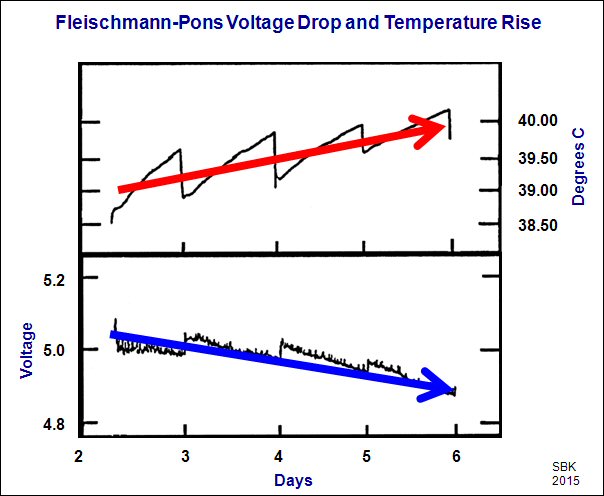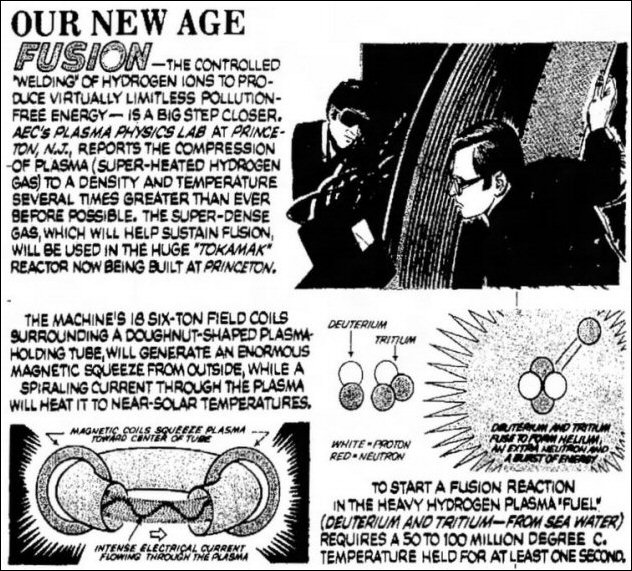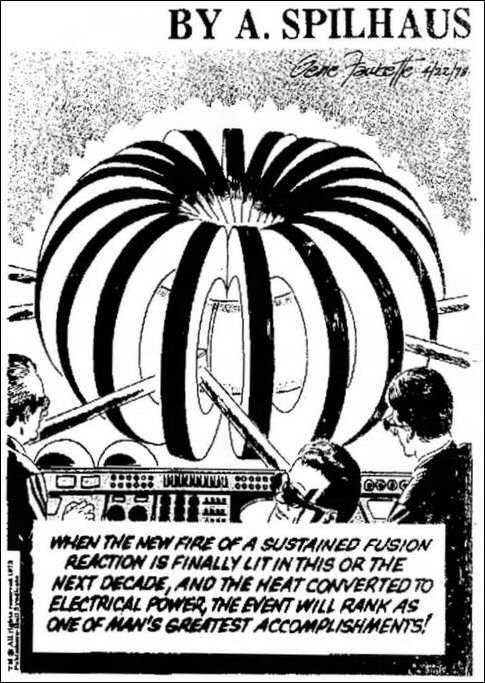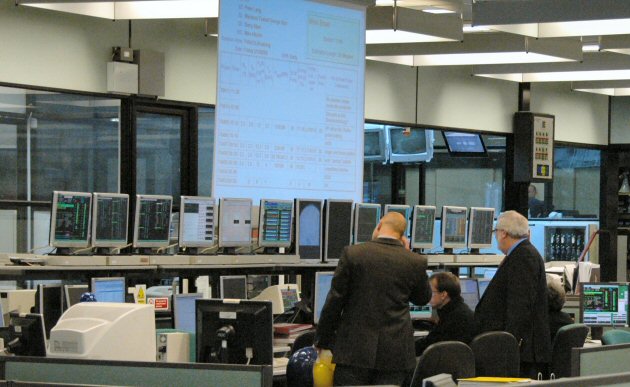
(Blue and red arrows added by SBK) Graph is figure 1 from Fleischmann, Martin and Pons, Stanley, “Calorimetry of the Pd-D2O System; From Simplicity Via Complications to Simplicity,” Physics Letters A , 176, p. 118, (1993) (Similar paper)
Kirk Shanahan is a physical chemist employed by the U.S. Department of Energy’s Savannah River National Laboratory. As this Freedom of Information Act request response shows, he spends a large amount of time attempting to discredit low-energy nuclear reaction research claims.
I published the graph above in my recent White Paper “Power Generation Via LENRs.” I received a response regarding the graph from Einar Tennfors, a retired Swedish plasma physicist. He claimed that the anomaly shown in the graph, an increase in LENR cell temperature concurrent with a decrease in input power, was easily explained by conventional science.
Tennfors said the temperature rise was due to increased conductivity in the cell. I asked him what causes the cell conductivity to increase. He said ion mobility increases with temperature. I asked him what causes the temperature rise that causes the ion mobility to increase. He said the heating is due to the interaction between the ion current and the surrounding ions.
I decided to seek a critic who could attempt a better argument. Shanahan was the man.





